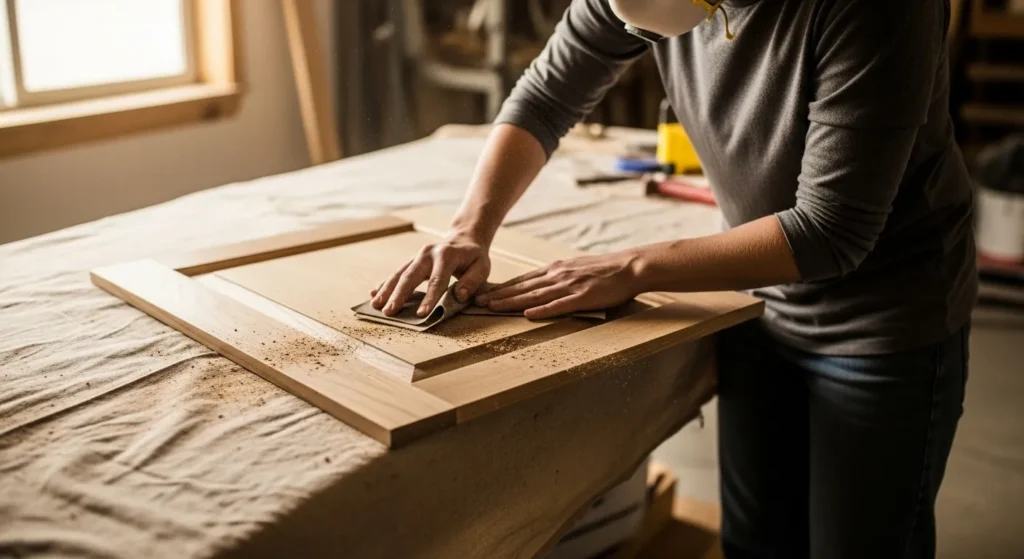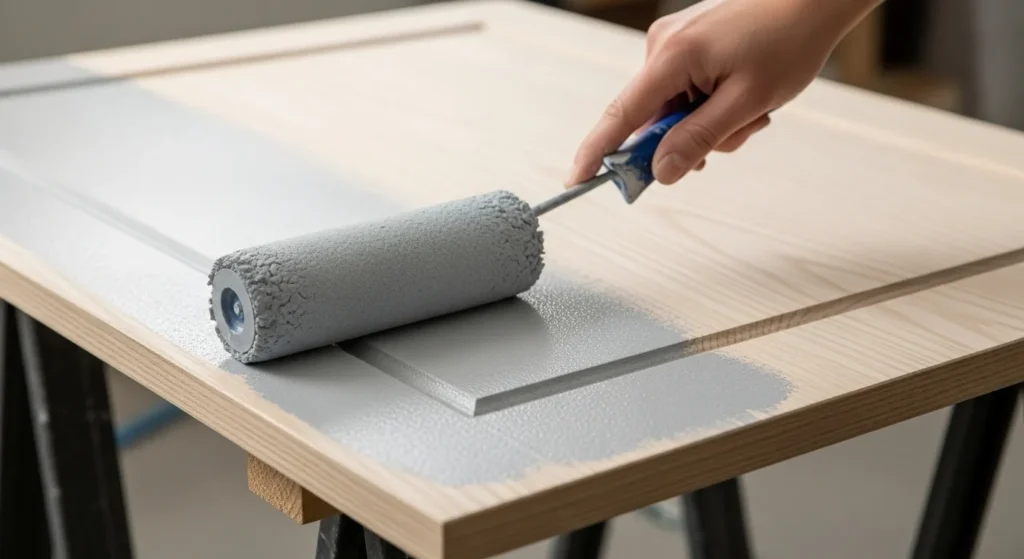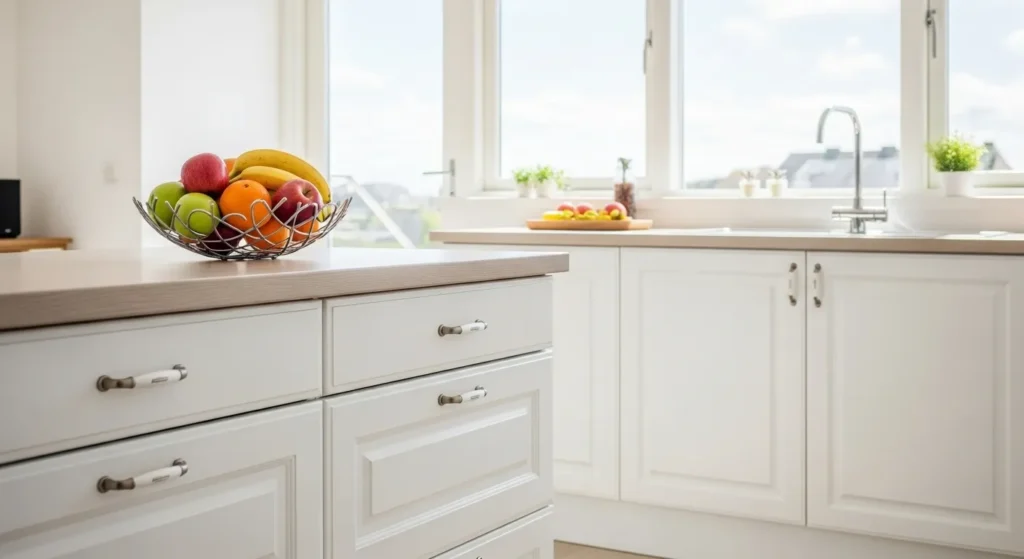Painting kitchen cabinets gives your space a new feel without high costs. Follow these steps for a smooth finish that holds up well. This guide covers tools, prep work, and tips based on proven methods.
Tools and Materials You Need
Gather these items before you start. They help achieve a clean result.
- Drop cloths or plastic sheets
- Screwdriver or drill
- Cleaner like TSP (trisodium phosphate)
- Sandpaper (100-150 grit and 220-320 grit)
- Wood filler and putty knife
- Primer (stain-blocking for dark or stained cabinets)
- Paint (enamel or latex for cabinets, semi-gloss or satin finish)
- Brushes (angled for details) and foam rollers
- Painter’s tape
- Tack cloth or damp rag
- Labels or masking tape for doors
Choose paint made for cabinets, such as Benjamin Moore Advance or Sherwin-Williams Emerald Urethane. These dry hard and resist grease. Costs range from $200 to $600 for a standard kitchen, depending on size.
Prepare Your Cabinets for Painting
Prep work matters most. It helps paint stick and last.
Remove Doors and Hardware
Take off doors, drawers, and knobs. Label each door with its spot using tape on the back. Number them to match cabinet frames. Store hardware in bags.
This step avoids drips on hinges. Work in a garage or spare room for drying space.
Clean All Surfaces
Wipe away grease and dirt. Mix TSP with water and scrub with a sponge. Rinse with clean water. Dry fully.
Grease buildup ruins paint adhesion. For tough spots, use a degreaser like Krud Kutter.
Repair Damage
Fill holes or dents with wood filler. Spread it smooth with a putty knife. Let it dry, then sand lightly.
Check for loose edges on laminate cabinets. Fix them first.
Sand the Surfaces
Use 100-150 grit sandpaper to rough up glossy areas. Sand lightly to create grip for primer. Wipe dust with a tack cloth.
For no-sand methods, test a deglosser product. But sanding gives better results on most cabinets.
Protect Your Kitchen
Tape off counters, floors, and walls with painter’s tape. Cover appliances and floors with drop cloths.
This keeps paint off other areas.

Apply Primer for a Strong Base
Primer seals the wood and helps paint cover evenly.
Choose a stain-blocking primer for oak or dark stains. Use a brush for edges and a roller for flat parts.
Let it dry for 1-2 hours. Sand lightly with 220 grit paper. Wipe clean.
One coat often works, but add a second for heavy grain.
This step answers common questions like “Do I need primer?” Yes, for smooth, lasting paint.
Paint Your Cabinets in Layers
Paint in thin coats for a pro look.
Paint the Frames First
Start with cabinet boxes on the wall. Brush edges, then roll large areas. Work from top to bottom.
Let dry 4-6 hours between coats.
Paint Doors and Drawers
Lay them flat on sawhorses. Paint backs first, then fronts after drying.
Use a foam roller to avoid marks. Apply two to three coats.
For colors, try neutrals like white or gray for bright spaces. Dark blues or greens add depth.
Drying takes 24-48 hours per coat. Full cure needs 5-7 days.

Reinstall and Finish Up
Once dry, put doors back. Use labels to match spots.
Add new hardware if old ones look worn. Test doors for smooth open and close.
For extra protection, some paints need no top coat. Check your can.
This process takes 3-5 days total, depending on drying.
Common Mistakes to Avoid
Skip these errors for better results.
- Not cleaning well: Grease causes peeling.
- Rushing coats: Wet paint leads to drips.
- Forgetting to sand between layers: Leaves rough spots.
- Using wrong paint: Wall paint won’t hold up to kitchen use.
- Ignoring lead paint: Test old cabinets built before 1978.
How long does paint last? With good prep, 5-10 years before touch-ups.
For more on colors, see our color psychology home interiors guide.
Best Paint Types and Finishes
Semi-gloss resists stains best. Satin hides flaws better.
Latex cleans easy. Oil-based lasts longer but smells strong.
For eco options, try low-VOC paints. See best eco-friendly paint options.
Questions like “What finish for cabinets?” Satin or semi-gloss works for most homes.
Tips for Special Cases
For laminate: Use bonding primer.
No-sand paints exist, like milk paint, but test first.
Two-tone cabinets: Paint uppers light, lowers dark.
Link to paint finish guide for room-specific advice.

For primer tips, visit Benjamin Moore’s guide.
This method saves money over new cabinets. Your kitchen will look fresh and work well for years.
